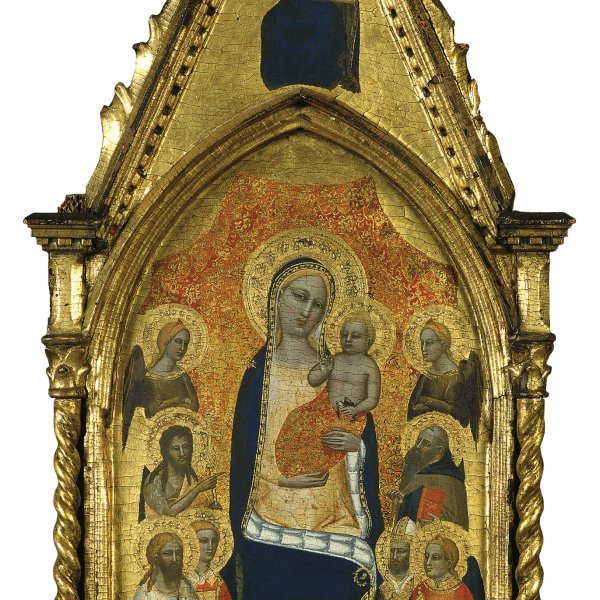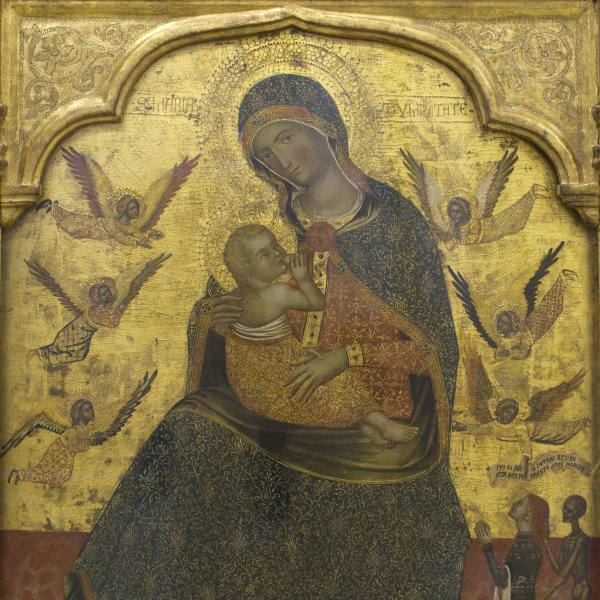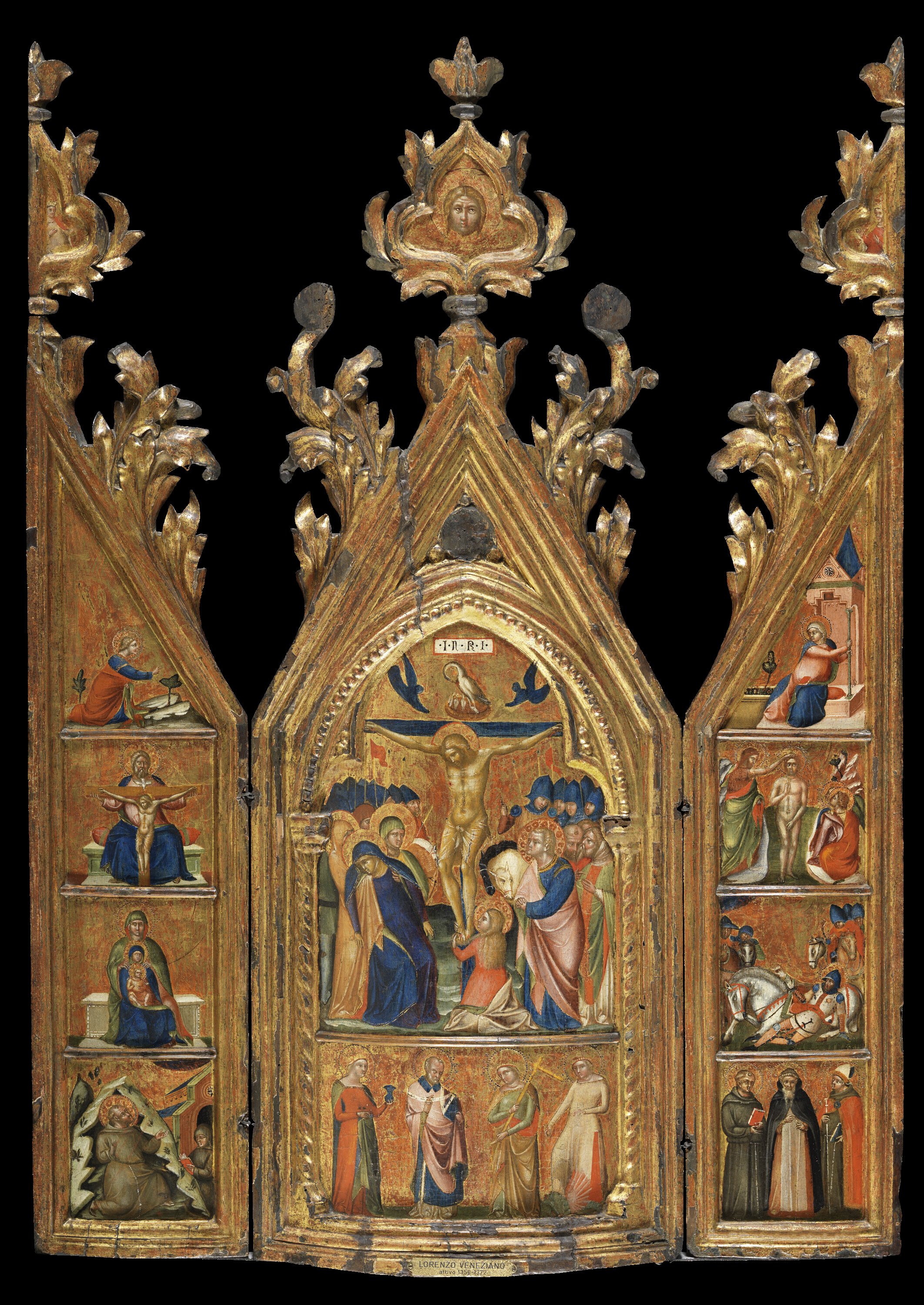Portable Triptych with a central Crucifixion
Lorenzo Veneziano was one of the leading artists of the Venetian School in the second half of the 14th century. Little information is known about his life but he left behind a series of signed and dated paintings that have been used to recreate his artistic personality and oeuvre. His early works reveal affinities with another Venetian artist, Paolo Veneziano, which has led to the assumption that he may have trained in his circle. The so-called Lion Polyptych of 1357 (Accademia, Venice), is the earliest known work by the artist while the latest is The Virgin and Child enthroned, a signed and dated work of 1372 (Musée du Louvre, Paris).
The present triptych was auctioned in London in 1976 with an attribution to Lorenzo Veneziano and was acquired for the Carlo de Carlo collection in Florence. The painting entered the Thyssen- Bornemisza collection a few years later in 1979, having been acquired on the Italian art market. According to the information in the catalogue of the London auction, the work had been in the collection of Count Alexander Schouvaloff in Saint Petersburg, where it was to be found in the mid-19thcentury. The triptych passed down through various generations of the family and was photographed in the 1890s when it was to be seen on display in a room in the residence of Alexander von Benckendorff.
In 1964 Pallucchini was the first to attribute the painting to Lorenzo Veneziano. The painting had been presented to the public in 1960 in an exhibition at the Royal Academy in London where it was catalogued as a work by an anonymous Venetian artist and dated to around 1370. Apart from Pope-Hennessy, who considered it to be by an anonymous miniaturist close to Lorenzo Veneziano, all other authors were in agreement regarding its attribution despite the problems involved in comparing it with other works by the artist on a larger scale.
The triptych has retained its original frame, albeit with some losses in its decoration and in the carved wooden elements at the top. The central image is that of a Crucifixion, while the predella of this small altarpiece has four saints, identifiable from left to right as: Saint Lucy, holding a small pot and her eyes; an unidentified male saint who is blessing and holding a book; Saint Helena, leaning her cross on her shoulder; and Saint Margaret standing on the dragon and leading it with reins. The composition of the Crucifixion adheres to the traditional arrangement with the Magdalen at the foot of the cross and two groups arranged on either side of it, with the soldiers and Pharisees in the background and the figures of Mary, the holy women and Saint John in the immediate foreground. Lorenzo Veneziano completed this central episode of the Passion with two angels and a pelican feeding its young with its own blood, in a nest just below the sign with the inscription I.N.R.I. According to the medieval bestiary known as El Fisiólogo, the pelican mourns the death of its young for three days, during which time the mother tears her breast and splashes her chicks with blood so that they return to life, a motif that was adopted in Christian symbolism.
On the left panel we see, from top to bottom: The Angel of the Annunciation, The Trinity, The triple Anne, and Saint Francis receiving the Stigmata; and on the right panel: The Virgin of the Annunciation, The Baptism of Christ, The Conversion of Saint Paul, Saint Anthony of Padua, Saint Anthony Abbot, and Saint Louis of Toulouse. On the outer side of the doors, drawn in light-coloured paint with the tip of the brush are Saint James the Greater and Saint Christopherwith the Christ Child on his shoulders.
The figures are all set against gold backgrounds and have precisely defined outlines. The poses and gestures are carefully analysed despite their small scale, as can be seen, for example, in the annunciate Virgin who, surprised by the angel, grabs the column next to her, or the pose and gesture of Saint Paul as he falls from his horse. Boskovits dated this triptych to around 1370–75.
Mar Borobia








